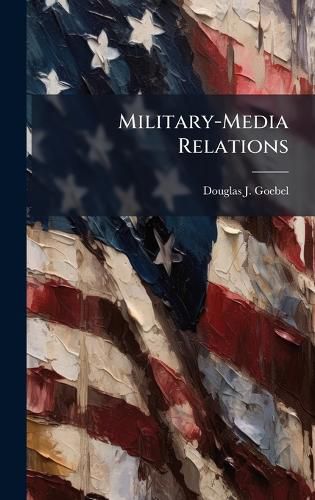Readings Newsletter
Become a Readings Member to make your shopping experience even easier.
Sign in or sign up for free!
You’re not far away from qualifying for FREE standard shipping within Australia
You’ve qualified for FREE standard shipping within Australia
The cart is loading…






This paper initially reviews the evolving relationship between the military and the media from the Vietnam War to the present. Following this analysis, the paper analyzes the future media environment and its impact on the theater commander and military operations. Many times there has been conflict between the two groups because of their differing missions. The media's goal is to keep the public informed in a timely manner and to remain competitive with respect to the other media organizations. The military wants to maintain operational security for the success of the mission and the safety of the troops. Despite these conflicts in the past, the U.S. military needs to work closely and plan carefully for media involvement in any future contingency. There are two reasons for this. First, the media's power is increasing rapidly because of technological advances and they will be present in any future conflict or operation. This presence will have a great impact on the commander and their planners in future operations. Likewise, the media presence will rapidly shape American and allied public opinion of the conflict with their real time reporting. Second, the end of the "cold war" brought the rationale for a large standing military force into question. The U.S. military needs the media to tell the military story to retain public support.
This work has been selected by scholars as being culturally important, and is part of the knowledge base of civilization as we know it. This work was reproduced from the original artifact, and remains as true to the original work as possible. Therefore, you will see the original copyright references, library stamps (as most of these works have been housed in our most important libraries around the world), and other notations in the work.
This work is in the public domain in the United States of America, and possibly other nations. Within the United States, you may freely copy and distribute this work, as no entity (individual or corporate) has a copyright on the body of the work.
As a reproduction of a historical artifact, this work may contain missing or blurred pages, poor pictures, errant marks, etc. Scholars believe, and we concur, that this work is important enough to be preserved, reproduced, and made generally available to the public. We appreciate your support of the preservation process, and thank you for being an important part of keeping this knowledge alive and relevant.
$9.00 standard shipping within Australia
FREE standard shipping within Australia for orders over $100.00
Express & International shipping calculated at checkout
This paper initially reviews the evolving relationship between the military and the media from the Vietnam War to the present. Following this analysis, the paper analyzes the future media environment and its impact on the theater commander and military operations. Many times there has been conflict between the two groups because of their differing missions. The media's goal is to keep the public informed in a timely manner and to remain competitive with respect to the other media organizations. The military wants to maintain operational security for the success of the mission and the safety of the troops. Despite these conflicts in the past, the U.S. military needs to work closely and plan carefully for media involvement in any future contingency. There are two reasons for this. First, the media's power is increasing rapidly because of technological advances and they will be present in any future conflict or operation. This presence will have a great impact on the commander and their planners in future operations. Likewise, the media presence will rapidly shape American and allied public opinion of the conflict with their real time reporting. Second, the end of the "cold war" brought the rationale for a large standing military force into question. The U.S. military needs the media to tell the military story to retain public support.
This work has been selected by scholars as being culturally important, and is part of the knowledge base of civilization as we know it. This work was reproduced from the original artifact, and remains as true to the original work as possible. Therefore, you will see the original copyright references, library stamps (as most of these works have been housed in our most important libraries around the world), and other notations in the work.
This work is in the public domain in the United States of America, and possibly other nations. Within the United States, you may freely copy and distribute this work, as no entity (individual or corporate) has a copyright on the body of the work.
As a reproduction of a historical artifact, this work may contain missing or blurred pages, poor pictures, errant marks, etc. Scholars believe, and we concur, that this work is important enough to be preserved, reproduced, and made generally available to the public. We appreciate your support of the preservation process, and thank you for being an important part of keeping this knowledge alive and relevant.